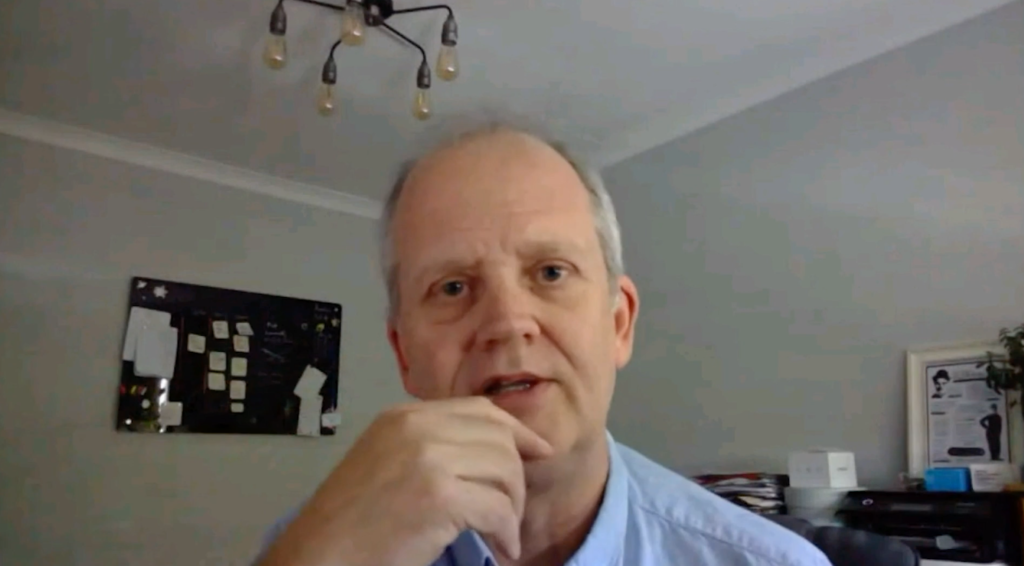Let’s be real—video animation is everywhere these days, and for good reason. Whether you’re trying to explain a complex product, tell your brand’s story, or just keep your audience engaged, animation offers a creative and impactful way to do it. It’s not just about looking flashy; it’s about making sure your message hits home.
In this blog, we’re going to break down the different types of animated videos you can use to level up your business communication. We’ll cover the basics—what animation actually is, the key styles you should know about, and how to pick the one that’s right for you. Plus, I’ll walk you through the steps of creating your own animated video, whether you’re doing it yourself or teaming up with a service like Shootsta. By the end, you’ll be ready to bring your ideas to life in a way that’s both effective and true to your brand. Let’s dive in!
What is video animation?
Video animation is the process of creating moving visuals from static images, graphics, or illustrations, and it’s become an essential tool in business communication. Unlike traditional video production, which requires filming, animation offers a more efficient and flexible approach to creating high-quality content. There’s no need to coordinate schedules, hire on-camera talent, or secure shooting locations. This makes animation particularly appealing for businesses with limited resources, allowing them to produce professional videos that align with their branding and communication goals.
Animation is also incredibly effective at simplifying complex concepts that are difficult to capture on film. For industries like SaaS, technology, or education, where abstract ideas and intricate processes are the norm, animation can break down these complexities into engaging, easy-to-understand visuals. Whether it’s explaining how a software program works or visualising a step-by-step process, animation provides a dynamic platform for conveying detailed content in a clear and compelling way.
Moreover, animated videos allow businesses to maintain message continuity and neutrality, especially when dealing with sensitive or impersonal content like HR announcements or policy updates. Unlike live-action videos, animation isn’t tied to specific individuals, making it a long-term solution that remains relevant even as personnel changes. This strategic distancing ensures that the message is delivered consistently and without unintended bias, enhancing its effectiveness and longevity.
Learn more about creating effective animated videos here 👈
Types of video animation
When it comes to video animation, there’s a wide variety of styles to choose from, each with its own strengths and best-use cases. Here’s a breakdown of some of the most popular types of video animation that businesses can leverage to tell their stories and connect with their audiences.
2D Animation
2D animation is the classic style most people think of when they hear the word “animation.” It’s all about flat, two-dimensional graphics moving in a way that brings them to life. You’ve probably seen this in cartoon-style explainer videos that simplify complex ideas and make them easy to understand.
What it’s good for: 2D animation is great for creating straightforward, cost-effective videos that tell a story or explain a concept. It’s ideal for businesses that want to produce content quickly and efficiently without sacrificing creativity.
Example [created using Shootsta]: The NSW Health 2D animation video effectively illustrates the journey of a patient, Josh, as he benefits from digital health technology after a bike accident. Created using Shootsta, the animation stands out for its clear and engaging storytelling, which simplifies complex healthcare processes into an easily understandable narrative. The visual style is both professional and approachable, making it easy for viewers to follow along and grasp the importance of eHealth NSW’s digital health support.
3D Animation
3D animation takes things to the next level by adding depth and realism to the visuals. This style is perfect for when you need to show off a product from every angle or create a lifelike environment that viewers can almost step into.
What it’s good for: 3D animation is your go-to for high-quality, detailed presentations. It’s especially useful for product demos, architectural visualisations, and anything else that benefits from a realistic, immersive look.
Example: The Slack animation uses 3D animation to vividly bring to life the concept of collaboration and productivity. Through rich, dynamic visuals, the video showcases how Slack connects people and apps, making it easier to turn great ideas into reality. This style not only highlights Slack’s functionality but also enhances viewer engagement by creating a visually captivating experience that effectively communicates the platform’s value.2D animation is the classic style most people think of when they hear the word “animation.” It’s all about flat, two-dimensional graphics moving in a way that brings them to life.
Motion Graphics
Motion graphics are all about moving text and graphic elements in a way that’s visually engaging and easy to follow. This style is often used to present information clearly and effectively, making it a favourite for corporate videos and infographics.
What it’s good for: Motion graphics are perfect for presenting complex information in a way that’s not just digestible, but also engaging. They’re often used in title sequences, infographics, and other content that needs to communicate a lot of data quickly and clearly.
Example: The Calibur animation leverages motion graphics to effectively explain the advanced technology behind their cloud storage and communication services. By using dynamic visuals and smooth transitions, the video simplifies the complex process of splitting, encrypting, and distributing client data across global storage hosts. The use of motion graphics here is key in breaking down and illustrating the sophisticated technology in a way that is both clear and visually appealing.
Whiteboard Animation
Whiteboard animation mimics the experience of watching someone draw out an explanation on a whiteboard. It’s a simple, yet highly effective way to break down complex topics into bite-sized, easy-to-understand segments.
What it’s good for: Whiteboard animation is excellent for educational content, training videos, and any situation where you need to explain a process or concept in a clear, step-by-step manner.
Example: The whiteboard animation for Unilever and the NCAA creatively outlines their partnership through dynamic, hand-drawn visuals. The whiteboard style effectively simplifies the concepts, making the benefits clear and engaging. This visual approach not only captures attention but also ensures that the messaging is straightforward and memorable.
Stop Motion Animation
Stop motion animation involves physically manipulating objects in small increments between individual frames, creating the illusion of movement when the series of frames is played as a continuous sequence. This style is unique and often has a handmade, authentic feel to it.
What It’s Good For: Stop motion is ideal for brands looking to add a touch of creativity and craftsmanship to their content. It’s great for storytelling with a personal, handcrafted touch.
Example: This short Shootsta stop motion animation creatively showcases our new Kit by bringing the unboxing experience to life. Through the use of stop motion, the video visually dissects the custom camera kit, piece by piece, in a playful and engaging way. This approach not only highlights the quality and thoughtfulness of the kit but also adds a fun, tactile element to the presentation, making the product even more appealing to potential users.
Typography Animation
Also known as kinetic typography, this style involves animating text in a way that’s dynamic and visually appealing. It’s all about making words move and interact with the viewer, often used in marketing campaigns and social media videos.
What it’s good for: Typography animation is perfect for emphasising important messages, making text-based content more engaging, and adding a dynamic element to presentations and marketing videos.
Example: The typography animation created by Shootsta for global luxury brands is a great example of how text-driven videos can powerfully convey a message. By using simple, bold, dynamic text animations, the video captures attention and communicates the sophistication and precision that align with luxury branding. Each word and phrase is carefully animated to resonate with the target audience, making the video not only visually engaging but also highly effective in delivering the message.
Choosing an Animated Video Style
Selecting the right animation style for your video isn’t just about what looks good—it’s about what works best for your brand and your audience. Here’s how to make sure you’re choosing the style that will have the most impact:
Audience
First and foremost, think about who you’re talking to. Your target audience’s preferences and expectations should heavily influence your choice of animation style. Are they young and tech-savvy, likely to respond well to slick, modern motion graphics? Or are they more traditional, where a classic 2D animation might resonate better? The key is to match the style with what your audience finds appealing and engaging.
Brand identity
Your animation should be a natural extension of your brand’s visual identity. If your brand is known for being cutting-edge and innovative, a futuristic 3D animation might be the perfect fit. On the other hand, if your brand is more about simplicity and approachability, a clean 2D animation or even a friendly whiteboard animation might be more appropriate. Whatever you choose, make sure it aligns with the colours, tone, and overall feel of your brand.
Budget and resources
Different animation styles come with different price tags and production timelines. 3D animation, while impressive, can be more time-consuming and expensive than 2D or motion graphics. If you’re working with a tight budget or deadline, consider simpler styles like whiteboard animation or typography animation, which can still be highly effective without the need for extensive resources.
Platform
Finally, think about where your video will live. Different platforms have different requirements and audience behaviours. A detailed 3D animation might be stunning on a website landing page, but could be overkill for a quick social media post, where something more concise like motion graphics or typography animation would perform better. Make sure the style you choose suits the platform where your audience will engage with it.
How to create animated videos
Creating an animated video might seem like a big task, but by breaking it down into manageable steps, you can bring your ideas to life with confidence. Here’s a step-by-step guide to help you create an engaging and effective animated video.
STEP 1 Define your objective
Before you start, get clear on what you want to achieve with your video. Are you looking to explain a product, engage your audience, or boost brand awareness? Defining your objective will guide every decision you make, from the style of animation you choose to the script you write. Ask yourself: What’s the main message I want my audience to take away?
STEP 2 Choose the right animation style
Once you know your objective, it’s time to choose an animation style that aligns with it. Whether it’s 2D, 3D, motion graphics, or whiteboard animation, your choice should reflect your brand’s identity and resonate with your target audience. Think about what style will best convey your message and appeal to your viewers. Choosing an animation style is simple with Shootsta, as we have a range of animation styles just waiting for you to add your messages and branding to make each uniquely yours.
STEP 3 Create a script and storyboard
With your objective and style in mind, start crafting your script. This is the backbone of your video, outlining the story you want to tell. Once your script is ready, develop a storyboard to visualise how your video will flow from one scene to the next. This will help you plan the timing, transitions, and key visuals before you start animating. Scripting and storyboarding is easy with Shootsta, with simple to use tools for both within the platform.
STEP 4 Design and animate
Now comes the fun and complex part—bringing your storyboard to life. Using a service like Shootsta makes this process a breeze, even if you’re not an expert. This step involves designing your characters, scenes, and other elements, then animating them according to your storyboard. It’s best to keep it simple and focus on making sure the animation enhances your message, rather than overshadowing it.
STEP 5 Add voiceover and music
The right audio can make a big difference in your video’s impact. A clear, professional voiceover can help guide your audience through the video, while music and sound effects can add emotion and depth. Make sure your audio complements the visuals and enhances the overall experience. When using Shootsta, you can choose from a range of diverse, professional voiceover artists from directly within the platform. As for music, either provide a track or some direction and our dedicated editing team will do all the work for you, piecing it together according to your script and storyboard.
STEP 6 Review and refine
Before you finalise your video, take the time to review it carefully. With Shootsta, you can easily review your newly animated video directly within our platform. Simply share it around and gather feedback from colleagues or a small test audience, and be open to making changes. This is your chance to catch any issues with timing, clarity, or visual appeal and make sure your video is as polished as possible.
STEP 5 Publish and promote
Once your video is ready, it’s time to share it with the world. Publish it on the platforms where your audience is most active, whether that’s your website, social media, or email campaigns. Don’t forget to track its performance—metrics like views, shares, and engagement will help you understand how well your video is resonating and guide future projects.
FAQs
What type of animation is best for my business?
Choosing the right animation style depends on your business objectives and target audience. If you’re looking to simplify complex concepts, 2D animation or whiteboard animation might be your best bet. For businesses showcasing products or requiring a more immersive experience, 3D animation can be highly effective. Motion graphics are ideal for corporate presentations or when you need to convey data in an engaging way. The key is to align the animation style with the message you want to communicate and what will resonate most with your audience.
How much does it cost to create an animated video?
The cost of creating an animated video can vary widely depending on the complexity, length, and style of the animation. Simple 2D animations might be more budget-friendly, while detailed 3D animations or highly customised motion graphics can be more expensive. When budgeting, consider factors like scriptwriting, voiceover, music, and revisions. Services like Shootsta’s can help you control costs by providing a platform that simplifies the production process, offering a range of animation styles for all purposes––allowing for professional-quality results without the high price tag of traditional animation studios.
Can I make an animated video without any design experience?
Absolutely! With the right partner like Shootsta you can lean on us to do all the heavy lifting, offering intuitive workflows, a range of animation styles, and a team who truly understands your brand identity––helping you create professional-quality videos without needing any prior design experience. The platform guides you through each step of the process, from scripting to final edits, making it accessible even if you’re new to animation.
How long does it take to create an animated video?
The timeline for creating an animated video depends on the style and complexity. A simple 2D animation will be a far shorter timeline than a more intricate 3D animation. If you value quick turnaround times for your animated videos then platforms like Shootsta can speed up the process significantly, thanks to its streamlined workflows and ready-to-use animation styles.
Ready to animate your next project with Shootsta? Contact us now to discuss how we can help bring your ideas to life with professionalism and creativity. Let’s make your message move!


